2012
Whodunit? The fall of a meteorite on the 6th of Floreal of the Year 11 in L'Aigle
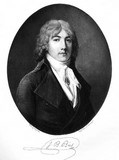
On the 6th day of the month of Floreal of the year 11 of the French Republic, that is April 26th, 1803 according to the Gregorian calendar, around 01:00pm, a meteorite exploded in the atmosphere above the city of L'Aigle, in Lower Normandy, and scattered some 3,000 pieces of stone over the countryside. Men and beasts got away with a memorable scare, but nobody and nothing came to serious harm.
That the meteorite of L'Aigle would remain of momentous importance in the history of science is due to the Interior Ministry deciding to dispatch, some two months after the fact, a bright young scientist, Jean-Baptiste Biot, to investigate the "moral and physical circumstances" of the event. A protégé of Laplace, Biot, who was not yet thirty, had already held the chair for mathematical physics at the College de France since the age of twenty-six.
Biot conducted his investigation with the brio of a master detective in a whodunit, and was able to demonstrate once and for all, by sheer logical deductions, based on the examination of clues and the questioning of witnesses, a fact which the science of the time had been obstinately denying: that stones of non-terrestrial origin could fall from the sky.
It remains to this day one of the best documented meteoritic events.
Go to the full memoir of Jean-Baptiste Biot (translated by Anne-Marie de Grazia)
Biot's bio

Gay-Lussac and Biot in a hydrogen balloon in 1804, studying the electric and magnetic properties of the atmosphere
He didn't rest on his laurels...
Jean-Baptiste Biot, physicist, astronomer and mathematician, was born April 21, 1774 in Paris. His father, who descended from a peasant family of Lorraine, worked for the Royal Treasury. While studying at the prestigious College Louis-le-Grand in Paris, Jean-Baptiste drew the attention of the mathematician Antoine-René Mauduit (1731-1815) who gave him private lessons. Yet his father sent him to Le Havre into apprenticeship with a merchant. His work consisted mainly of copying letters. He ran away and, at age 18, he joined the Army of the Revolution as a volunteer cannoneer and was injured at the Battle of Hondschoote, which liberated Dunkirk from the armies of the First Coalition of European powers which were attacking the Revolution. He returned to his family with a permanently damaged knee, got involved in political protests, even marched against the Convention on 13 Vendémiaire, and was accused of being a deserteur and jailed.
Go to article
The meteorite of Madame Comette
Only 65 meteoritic falls have been historically documented in France over the past four centuries. The latest was discovered in October 2011, when a tradesman repairing a leak in a roof in the Paris suburb of Draveil found a unusual looking stone. The 88gr chondrite meteorite, the size of a chicken egg, covered with a black fusion crust acquired during its crossing of the atmosphere, was trapped in the roofing insulation. The landing had been violent: "Only Superman could have smashed tiles in this way!" declared the roofer, who conjectured rightly that he was faced with a space-traveller, and after having broken off a small piece for himself, handed it over to the mistress of the house, Mme Comette (Nomen est omen!)...
Go to article
Michael Gordin: The Pseudoscience Wars: Velikovsky and the Birth of the Modern Fringe - a review by Ev Cochrane
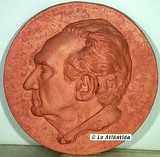
Velikovsky medaillon by Evelio Delgado
"From the moment of publication of Worlds in Collision in April 1950, Velikovsky was branded a crackpot. There was no careful consideration, no engaged debates about the book's status within the scientific community. Velikovskianism was, so to speak, born pseudoscientific."
Michael Gordin
"I have again read in Worlds in Collision. It is a book of immeasurable importance, and scientists should read it."
Albert Einstein
Gordin would appear to be ideally suited to tackle the controversy sparked by the publication of Worlds in Collision. In addition to being a historian of science at Princeton University—one who is fluent in Russian, Velikovsky's native language—Gordin had ample opportunity to take advantage of the fact that that University's Firestone Library serves as the final resting place for Velikovsky's voluminous archives, which he mined for countless anecdotes and behind-the-scenes commentaries on the dramatic events in question. Included among the scientists quoted by Gordin on this or that aspect of the Velikovsky Affair are some of the greatest figures of the 20th century, including Albert Einstein, Harlow Shapley, Otto Neugebauer, Polykarp Kusch, and Harold Urey. (.../...)
Go to article
A precise chronology of Exodus, by Flavio Barbiero
Prof. Stavros Papamarinopoulos' remarkable article on "A New Astronomical Dating for the Return of Odysseus to Ithaca" brought many passionate responses. Among them, the most surprising was an article in progress which Adm. Flavio Barbiero sent to us: he has been working on an exact chronology for the Exodus of the Hebrews out of Egypt and on the hypothesis of a solar eclipse explaining the "plague of darkness" in the Book of Exodus. He has come up, quite independently from Stavros Papamarinopoulos' work - neither was in touch with the other about their research - with the date of May 16, 1208 B.C. for this eclipse, leading to a date of the night of July 2-3, 1208 B.C. for the Passage of the Red Sea. That would be some 15 months before the return of Odysseus to Ithaca!
Go to article
The 2012 Conference of Quantavolution in Naxos, Greece
The exact date of Odysseus' return to Ithaca - could it have been October 25th-30th, 1207 B.C.?
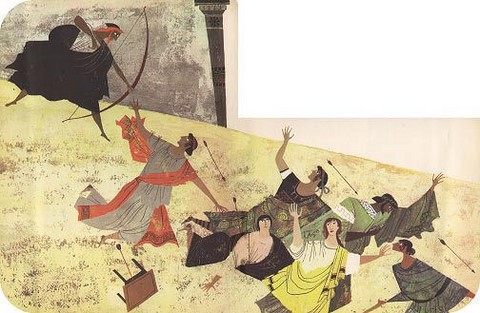
"...and the sun has perished out of heaven and an evil mist covers all..." (Homer, Odyssey, 20, 356-357).
Already the ancient astronomer and philosopher Heraclides Ponticus, or Heraclides of Pontus (c. 390 - c.310 B.C.) in his Allegories, 75, 1, 1-9, 3, has explained this passage of the Odyssey as referring to a solar eclipse. He was the first to our knowledge to state that the seer Theoclymenos was thus announcing to the wooers assembled in Odysseus' palace the onset of a solar eclipse, which would see the hour of their own undoing.
But was Heraclides really the first? (.../...)
Go to article
Jean-Pierre Petit: Faster than light - a scientific comic strip
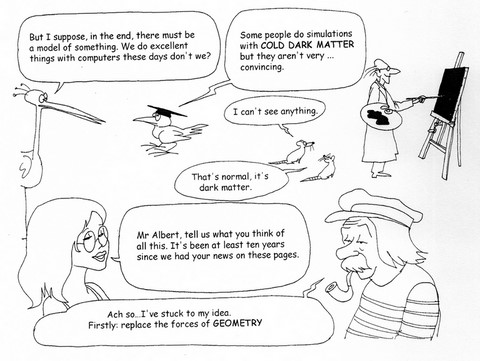
translated by John Murphy
French astrophysicist, plasma-physicist and comic book author, Jean-Pierre Petit - "the man who draws faster than his shadow" - created a remarkable series of scientific comic books around his endearing hero and maybe alter-ego, Archibald Higgins, under the motto: "Learned sometimes, kind always." We are happy to present here, with his authorization: The Speed of Light. Have fun! It's serious...
Go to the comic book
Abstracts of papers on plasma science delivered at Atmosphere and Ionosphere Safety Conference at Kaliningrad, Russia, 2010
After the success of our abstracts on Ball-Lightning we present here abstracts of papers on plasma from the "Atmosphere Ionosphere Safety" Conference - AIS 2010 in Kaliningrad, Russia. These technical papers, which point at the work done by Eastern scientists on this subject, should be of interest to any serious fan of the "Electric Universe" theories.
Go to the abstracts
What happened on July 21th, 365 A.D.? - St Jerome vindicated

The tsunami described in vivid terms by Roman historian Ammianus Marcellinus (325/330-after 391 A.D.) and dated to have occurred on July 21, 365 A.D., was of a magnitude far superior to any anything hitherto suspected: it was triggered by an earthquake which, on that one day, lifted the Western coast of Crete 10 meters out of the sea...
Go to article
Rome: The mud-layers of Crypta Balbi
By Prof. Gunnar Heinsohn: In complement to "From Memphis to Maastricht:" Was the Theater of Balbus covered in mud at the occasion of the tsunami reported by the Roman historian Ammianus Marcellinus?
Go to article
From Memphis to Maastricht: smothered Roman cities
(In answer to "The Tsunami which destroyed Olympia," Prof. Gunnar Heinsohn communicated to us the following article:)
...Just as mysteriously as Dura Europos [Syria, on the bank of the Euphrates, abandoned after 256-7 A.D.], far more celebrated metropolises of Antiquity disappear in the sand, without having suffered any previous attack. Among them, at a linear distance of some 1,000 km to the Southwest of Dura Europos, Memphis, the fabulous capital of Egypt, commands attention. It is scientifically identified only at the occasion of the Napoleonic "Campaign of the Pyramids" (1798-1801; Champollion 1814), yet in the 13th century A.D., the geographer Abdul-a-Latif al-Baghdadi had been moved to awe and admiration by its gigantic fields of ruins...
Go to article
The tsunami which destroyed Ancient Olympia
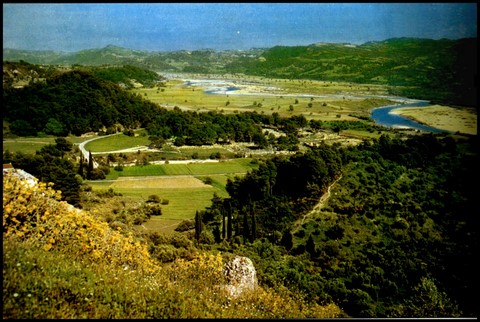
The site of Olympia today, with the Kladeios River
It appears now that Olympia, the site of the Temple of Zeus and of the ancient Olympic Games, was destroyed by several tsunamis reaching far inside the land and not, as had been generally accepted, through earthquakes and riverfloods. These insights results from the investigation of the almost eight-meter thick layers of sediments under which the ancient site lies buried.
Go to article
Trevor Palmer: about the Mayan Calendar and other Doomsday scenarii
Trevor Palmer's "Doomsday Cults and Recent Quantavolutions" at the Quantavolution Conference in Athens, 2011.
Go to article
Fukushima: how safe is Pacific fish?
Fukushima - a quantavolution indeed! And it will affect the way we live forever... In May-June 2011, a level of cesium137 45 million times above normal was found in the Pacific waters off Japan - this means, where there used to be 1 gram, there were now 4.5 tons! - levelling off at 10,000 times normal in July instead of continuing to decrease as expected... This raises the question: how safe is the consumption of Pacific fish? We reproduce here an article of the MONTREAL GAZETTE of January 13, 2012 which should help Q-Mag readers make informed dietary decisions.
Go to article
14,000 US deaths tied to Fukushima nuclear reactor disaster
Cold nuclear transmutation of chemical elements and ball-ligthning - 2010 Conference of Sotchi, Russia (short abstracts)
We complement our issue on ball-lightning with these short abstracts in english of papers given on a scientific conference in Sochi, Russia, September 26 to October 3, 2010 on the subject of COLD NUCLEAR TRANSMUTATION OF CHEMICAL ELEMENTS AND BALL LIGHTNING which, together with the KALININGRAD CONFERENCE of the same year, shows the main directions of research on this subject, which is generally given more attention in Europe and in Asia than in the United States - where ball lightning is still more or less relegated to the corner of the occult. As for the KALININGRAD CONFERENCE abstracts, the english is generally problematic but we have preferred not to introduce errors by trying to correct the language. These abstracts should be of interest to our "Electric Universe" physicists and plasma buffs!
Go to abstracts
Venus and a Cosmic Serpent in Papua-New-Guinea

Maurice Godelier (born in 1935), who was the assistant of Claude Lévi-Strauss, is one of the most highly regarded French anthropologists of today. He wrote anthropological history when he studied a moutain tribe of Papua-New Guinea, the Baruyas, who had been discovered in 1951, having never seen a white man before, and who had known only stone tools until then. He spent seven years with them, between 1967 and 1988. His approach is that of a structuralist, solidly working within the methods and norms of scientific anthropologies as it is practiced today and, of course, would know little of the theses of Immanuel Velikovsky, of catastrophism or of Quantavolution and certainly would have no recourse to them as interpretative tools.
Go to article
The light of all life
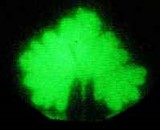
he German biophysicist Fritz-Albert Popp has established the existence of light in living organisms. The presence of these biophotons is undeniable. Experts are fighting about the origin of the light and about its significance.
Originally, Fritz-Albert Popp, born in 1938, wanted to become a philosopher. "Then my physics teacher persuaded me to study physics." But he preserved his penchant for unusual thinking though it exposed him to a life-long struggle for his reputation in academia. This despite the fact that, three decades ago, he made a discovery which he seriously thought could bring him a Nobel Prize in physics: he had discovered the existence of a weak light in living cells. It shines merely at a rate of a few quantas per second per square centimeter, equivalent to the light of a candle seen from a distance of 20 kilometers.
The existence of these biophotons has meanwhile become undisputed. Still, Popp received no Nobel Prize for his pains. Instead, his theories have been attacked as "esoterism," and "nonsense and poppycock." Fritz Schäfer from the Max-Planck Institute for biophysical chemistry in Goettingen admits, though, "that the ultra-weak radiance of cells is a generally accepted fact," and "that the origin of this radiance has not been ascertained until now," although he considers the theses of Popp "to have been clearly disproven."
But Herbert Klima, of the Atomic Institute of the University of Austria in Vienna, concedes that Popp, the "pioneer of research in biophotons," has delivered "three decades of serious scientific work."
Go to article
Origins of biophotonics
Around 1923 Alexander Gurwitsch discovers that living organisms (onions, yeast) emit an ultra-weak light and guesses that there might exist a connection with the stimulation of cell-growth. He gives the luminescence the name "mitogenetic radiation" and finds evidence that it may be located in the spectrum around 260nm.
After a preliminary enthusiasm for the discovery of Gurwitsch - only one vote was missing for him to get the Nobel Prize - his discovery was put in doubt, or dismissed as unimportant. Despite the fact that Gurwisch's discovery was verified many times and has never been disproven, "mitogenetic radiation" was forgotten, if not discredited. Still in 1980 it was mocked in Germany as "a miracle from the USSR."
Around 1950, Russian biophysicists study "ultra-weak photon emissions" (dark luminescence) from biological systems with the help of modern photon multipliers. The scientists publish their results mainly in the publication "Biophysics" (Biofizica). They keep bashfully silent about the connection with Alexander Gurwitsch's "mitogenetic radiation," but they too establish a correlation with cell growth. They verify that the radiance is emitted by practically all living organisms and that with advancing stages of evolution it seems to diminish in intensity (.../...)
Go to article
Prof. Sergey Pulinets on predicting earthquakes through atmospheric phenomena
See also the illuminating interview of Prof. Pulinets on earthquake prediction by monitoring of ionospheric "precursors," which treats of the "earthquake-side" of the Fukushima catastrophe.
Doggerland lost
They broke off after the cold. The ice age was over, the glaciers had retreated all the way back to Scandinavia, and humans wandered Northward. Over the land they settled down on, the North Sea today swashes.
You must imagine the place as a paradise. Lakes lapping gently in the marshes, rivers winding their course through lusch landscapes of grasses and bushes. Food was a-plenty: the waters teemed with fish, birds nested in the reeds, berrybushes covered the banks. Archaeologists surmise that, until about 8,000 years ago, thousands of humans must have lived on what is today the bottom of the North Sea.
Geoscientists have now resurrected their long-gone land (.../...)

